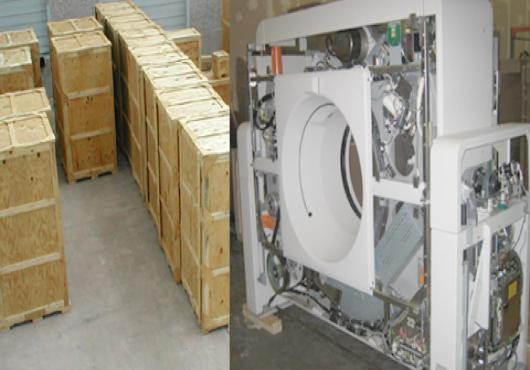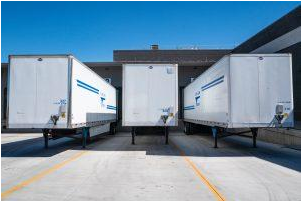
Due to recent events with COVID-19, many companies are dealing with medical equipment packaging and shipping. Be it that they are shipping locally or doing so overseas, they are trying their best to ensure that the medical equipment stays as safe as possible throughout transportation. Unfortunately, this usually isn't easy to do, especially considering the current shipping container market. So, to make your shipping endeavors a bit easier, we will go over the best practices for the safe shipping of medical equipment.
Equipment preparation
As it is with most things in life, medical equipment packaging and shipping is mostly about preparation. Properly preparing medical equipment is the best way to ensure its safety and avoid potential accidents and mishaps.
Understanding the shipping route
It stands to reason that packing medical equipment for local shipping is quite different from doing so for overseas. In order to safely pack and ship your items, you need to know what they will go through.

If they will go through harsh weather, you may want to increase the padding and the wrapping materials. If different companies are going to handle your items, you may want to ensure safe handling and increase your containers' sturdiness. All in all, the better you understand the route, the better you will protect your medical equipment.
Using the right packaging materials
Depending on what you plan on shipping, your packing materials can differ widely. For sizeable medical machinery, you will probably use cardboard packing for protection from moisture and abrasion, and then wrap them with dense padding and wrapping. For smaller tools, you may need to obtain plastic containers to ensure that no moisture touches them and that they are easy to transport. Meanwhile, when it comes to cold chain pharmaceuticals, controlled conditions are a must. All in all, there is a lot to consider, so we suggest that you research carefully.

The most common materials used for packing medical equipment are:
- Medical grade paper - This is packing paper coated in polymer, therefore preventing contamination.
- Aluminum - Used as light, oxygen, and moisture barrier.
- Plastic containers - The most common types are LLDPE, PET, and PP.
- Top-quality cardboard boxes.
- Standard padding and wrapping materials.
In most cases, the best way to pack your items is to combine the right packing materials while considering the route you are going to take and the modes of transport you will use. But to find that "best way", you need to understand the role that different packing materials play and how to best to combine them.
Safety standards
Luckily, most countries understand the fragility of medical equipment and the importance that these items have. Therefore, especially when it comes to international shipping, there will be specific safety standards that you'll need to adhere to. You may even be required to use biodegradable packaging in certain situations, which involves its own set of preparation and research. Apart from proper packing, these standards will include adequate loading and unloading procedures and safety regulations when it comes to vehicles. So, before you ship, ensure that your items will be taken care of in all the essential ways.
Labeling
The final thing that we are going to mention in regards to preparing medical equipment for shipping is the labeling. People often forget how vital labeling is when it comes to avoiding accidents and mishaps. The easiest way to properly label your containers is to assume that the people handling them will not know what is inside. If they do, great, but always assume that they will not have a clue. Therefore, it is up to you to use labeling to give them the necessary information to handle your items safely. Make sure to first write what is inside, and then to label for:
- Heavy items.
- Fragile items.
- Item orientation (which side should be up).
Such information can be the deciding factor between your items remaining safe and being rendered unusable.
Shipping of medical equipment
The second part of medical equipment packaging and shipping is how to deal with the shipping procedure properly. While properly preparing medical equipment is vital, you still need to understand the shipping procedure to ensure that your shipments don't get sidetracked. With this in mind, here are some of the critical aspects that you should go over.
Get familiar with the legal procedures
Depending on where and what you plan on shipping, there will be different legal procedures to go through and paperwork to fill out. So, do yourself a favor and research the legal aspect of shipping medical equipment in advance. Certain permits can require weeks to obtain, and if you are shipping to a different country, there might be additional legal requirements along with a language barrier to overcome. So, the sooner you start researching, the better.
Pick the right shipping company
It is hard to overstate the importance of picking the right shipping company for your medical equipment. While most companies can deal with standard items, medical equipment is usually far too complicated and fragile for sub-par or mediocre companies to deal with. So, when looking for a shipping company, ensure that you only with a top-notch one. The recent events related to COVID-19 have had a big impact on the pharmaceutical industry, giving shipping companies plenty of experience with medical shipping. So, ideally, you want someone with great reviews and ample experience with medical equipment shipping.

Final thoughts on medical equipment packaging and shipping
With proper preparation and the right shipping company by your side, medical equipment packaging and shipping can be relatively straightforward. However, it is up to you to do the necessary research and apply the right procedures to prepare correctly. Do what we've outlined, and we can all but guarantee that you will ship your medical equipment with ease.






